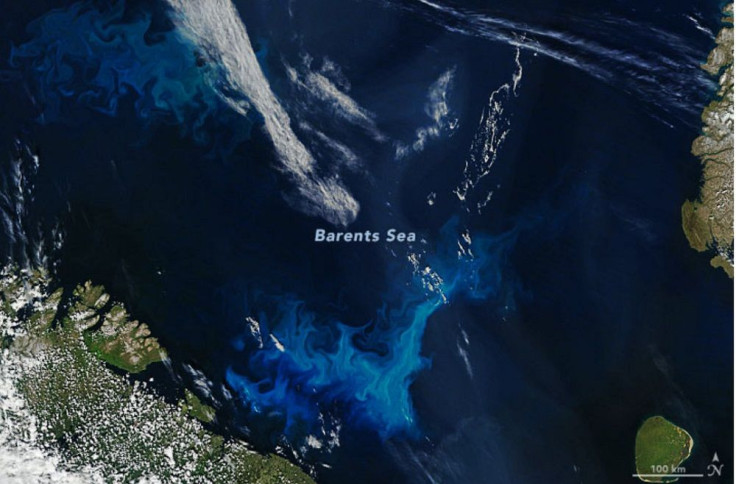Satellite Image Shows Swirls Of Phytoplankton Bloom In Arctic Ocean

KEY POINTS
- A satellite image captured the phytoplankton bloom in the Arctic Ocean
- The phytoplankton bloom can be seen as green and milky white swirls in the water
- Such blooms have been increasing in the Arctic in the last two decades
NASA satellites captured an image of the phytoplankton swirls in the Arctic Ocean's Barents Sea. Such phytoplankton blooms in the Arctic have been increasing in recent years.
A phytoplankton bloom occurs when a phytoplankton species reproduce at a rapid rate in a short amount of time, causing their concentration to be high and the waters to visibly change in color. Even the Arctic Ocean and its peripheral seas experience such phytoplankton blooms during the summer when they lose ice cover and the water gets exposed to sunlight.
During these events, the blooms can be so large that they can be seen from space. This is the case for the summer 2020 bloom in the Barents Sea.
In an image captured by the Moderate Resolution Imaging Spectroradiometer (MODIS) instrument on NASA's Terra and Aqua satellites on July 26, the phytoplankton bloom can clearly be seen in the Barents Sea. The image, shared by NASA Earth Observatory, captured the bloom as swirls in shades of green in contrast with the dark blue water of the sea.
The spring and summer blooms in the Barents sea are often composed of algae with silica shells and chlorophyll, which is why they appear greenish in color in satellite images, according to NASA Earth Observatory. Later on, in July and through autumn, the warmer waters promote the growth of another kind of bloom that turns the water "milky white-green" in color.
In the July 26 image, both shades can be observed in the bloom.
Although phytoplankton blooms are considered common in the Arctic, such events have actually been increasing in recent years. The researchers of a recent study found that the phytoplankton biomass in the Arctic has increased by 57% in the last two decades, likely due to the ice loss resulting in more ice-free waters.
"In a given volume of water, more phytoplankton were able to grow each year," study lead Kate Lewis of Stanford University said in a news release earlier in July. "This is the first time this has been reported in the Arctic Ocean."
With Arctic ice continuing to shrink, there is no saying how much more it will change in the coming years. The researchers say it could eventually look more like the other, more temperate waters.
© Copyright IBTimes 2025. All rights reserved.






















